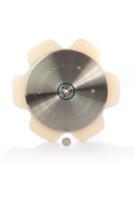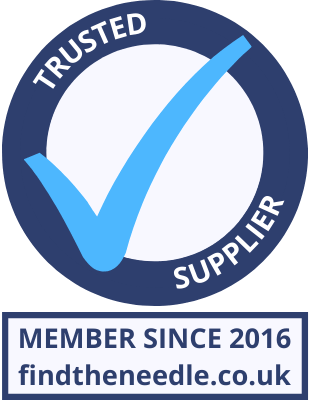 Add My Company
Add My Company
Sign In
Ovens and Proover Food Processing Chains
13-06-2017

Rotalube the Unique Chain Lubrication system.
The unique Chain Lubrication System by: Rotalube Systems Ltd, answers all the inherent current problems associated with chain lubrication such as those encountered with erratic drip/spit feed systems and costly hand lubrication.
It is a controlled applicator device that does not suffer from excessive wear maintains accurate lubrication whatever the condition of the chain, usage and speed.
Many plant maintenance engineers bemoan the fact that keeping expensive chains effectively lubricated is a problem to which there is no wholly satisfactory solution. Lubrication methods range from the “man with a brush or oil can” to complex plc controlled spray systems, but often the lubricant never seems to get exactly where it is needed.
Traditionally there have been four main chain lubrication methods all of which have functional issues.
Manual Application.
When lubricant is applied by hand this method is costly, and can be erratic, because it depends exclusively on the human element to ensure that the lubrication is carried out correctly. It is often the case that the chain is over lubricated when a lubrication schedule takes place, but, critically the film of lubricant is not maintained in-between lubrication cycles which sees the amps increase over periods of time. It is during this high amp reading that the chain is likely to be under lubricated and consequently wearing.
Drip Feed Application.
Often seen as a step forward from manual lubrication, the “drip feed” solution introduces a degree of automation, with a pump delivering a measured quantity of lubricant. The “problem” with “drips” is that they vary in size and trajectory!! The part of the chain that requires lubrication may not always be the location where the drip lands! The potential for having lubricant in unwanted places is significant and costly.
Static brush application
Promoted as a further “step-up” - the static brush coupled to a pump which controls the frequency and volume of lubricant delivered, still leaves the customer with problems. On installation, trials need to be rigorous as the brushes are vulnerable to damage. Additionally, this method demands regular and timely maintenance, as the application brushes can clog with dirt from the chain and the bristles often wear at unpredictable rates. This can leave key areas of the chain out of contact with the lubricant. In certain environments the brush will compact debris into the chain thereby preventing lubricant penetrating the articulating parts of the chain.
Static brush application.
Promoted as a further “step-up” - the static brush coupled to a pump which controls the frequency and volume of lubricant delivered, still leaves the customer with problems. On installation, trials need to be rigorous as the brushes are vulnerable to damage. Additionally, this method demands regular and timely maintenance, as the application brushes can clog with dirt from the chain and the bristles often wear at unpredictable rates. This can leave key areas of the chain out of contact with the lubricant. In certain environments the brush will compact debris into the chain thereby preventing lubricant penetrating the articulating parts of the chain
Spit/spray system
Currently the most commonly installed lubrication system for chains on large installations. It is commonly very expensive to install, often involving a complex plc to control both the timing and volume of lubricant. Extensive pipe-work is also often required to attempt to ensure that the lubricant goes where it is required, and that not too much of it goes “elsewhere”. (A difficult thing to control!) Variable chain speeds cause these types of system to miss the vital lubrication points of the chain.
With all of these systems there are also a number of common issues.
“Over lubrication” can cause the chain rollers to slide leading to “flat spots”, which can cause the rollers not to roll. This can also causes product contamination and environmental issues – not to mention the wasted cost.
“Under lubrication” will cause the chain to wear and break down prematurely. Over time there is also a danger of inaccurate lubrication. It is widely recognized that, at some point, the chain stretches (wears), which moves the pitch of the pins. The static lubrication points of the spray nozzles cannot compensate for this. Manual intervention is required to reset the system, a costly exercise. Nozzles can also get damaged and knocked out of position, so that even if the system is operating, the lubricant is not penetrating the pins exactly where required
RotaLube, the patented system from Interlube Systems has none of these drawbacks. It offers a totally unique and precise method of applying the right amount of lubricant to exactly the right place on the chain no matter what the speed and size of the chain and how frequently the speed varies.
For more information on Ovens and Proover Food Processing Chains talk to Rotalube Systems Limited
Enquire Now
More Case Studies
List your company on FindTheNeedle.

